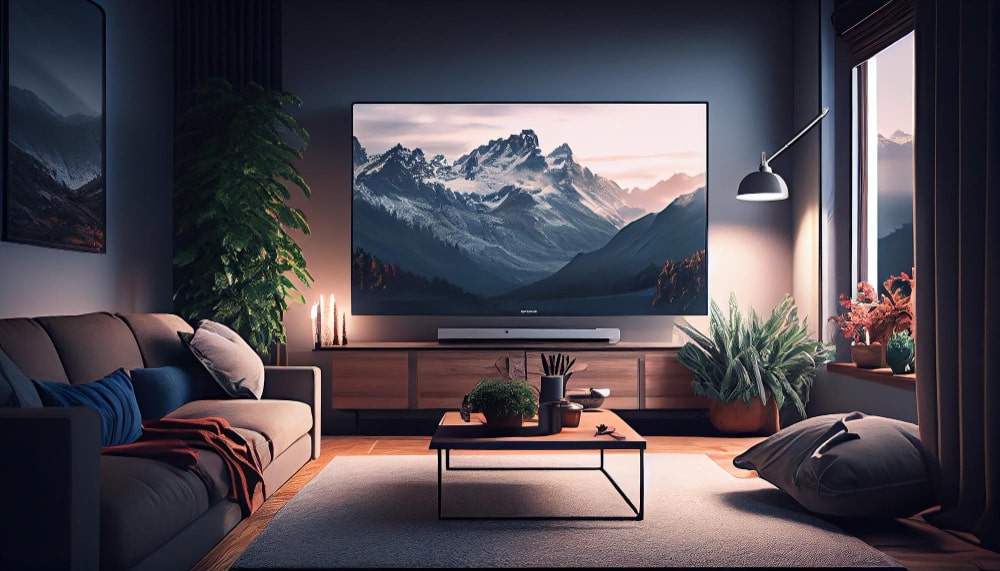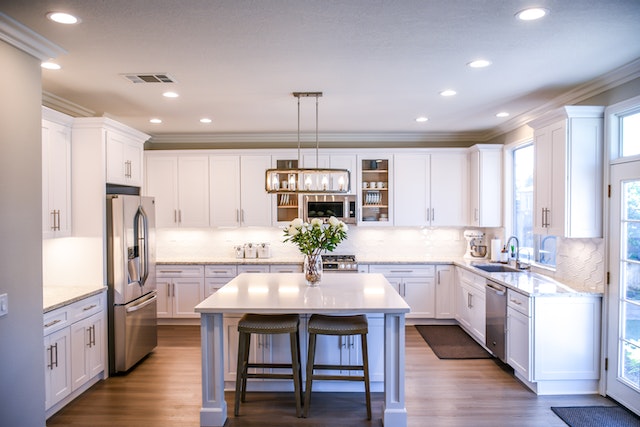As the world continues to move at lightning speed, a special entertainment area in your home has become increasingly important to relax and take stress off. A home theatre is no longer seen as a luxury but rather an investment that offers comfort and pleasure.
Regardless of whether you’re someone who enjoys movies, games, or immersive experiences, knowing how to design a home theatre room can take your habits up several notches. This guide will help you transform any available space within your house into an exclusive personal movie zone – be it simply using a corner section or even converting an extra room for this purpose.
What is a Home Theatre Room?
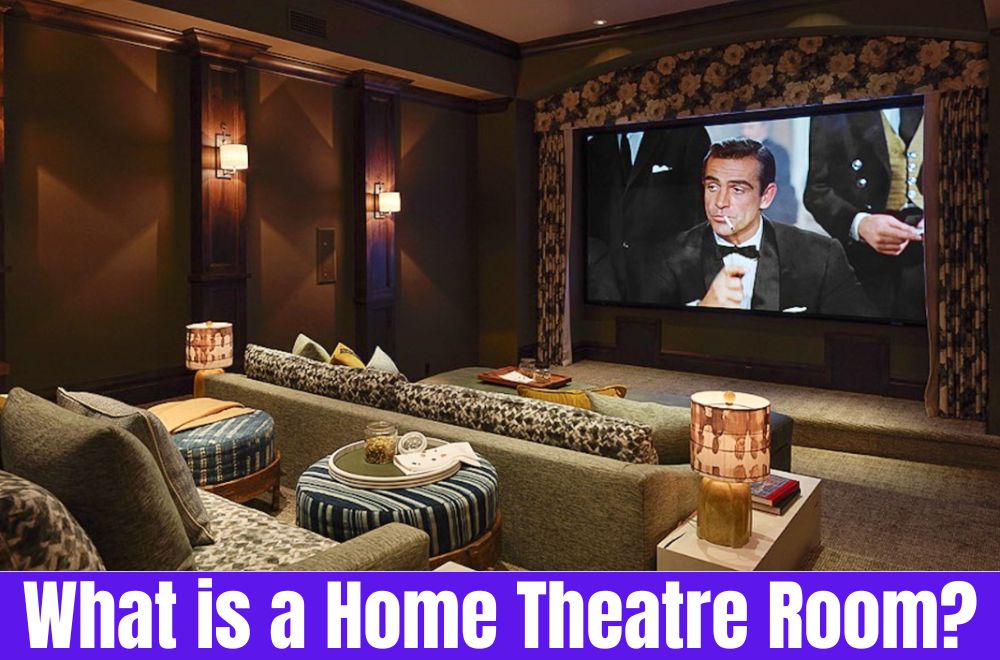
A Home Theatre Room is a specially designated area in your residence that provides an immersive audio-visual entertainment environment.
It usually comprises top-notch sound and visual systems, cozy seating arrangements, and well-planned aesthetic detail. This individualized cinematic haven offers an unmatched delight for experiencing movies, playing games, or engaging with multimedia content from the convenience of home.
How to Design a Home Theatre Room – Top 6 Steps
1. Understand Your Space

Whether you are learning how to make a home gym or designing a home theatre room, careful assessment of your chosen space is extremely important for a successful home theatre.
Start by examining the dimensions, design, and unique features of your location that might impact acoustics and aesthetics alike. Ensure to take specific measurements while identifying obstacles such as doorways or windows which may pose complications.
By knowing in detail, you can use it as a model for determining key aspects of your theatre design. This will help in making an effective layout plan and selecting proper equipment.
By recognizing the distinctive features of your surroundings, you can customize your personal movie theatre to compensate for any items while using its fullest capacity; ensuring that both yourself and visitors participate in an engaging entertainment experience every time!
2. Set a Realistic Budget
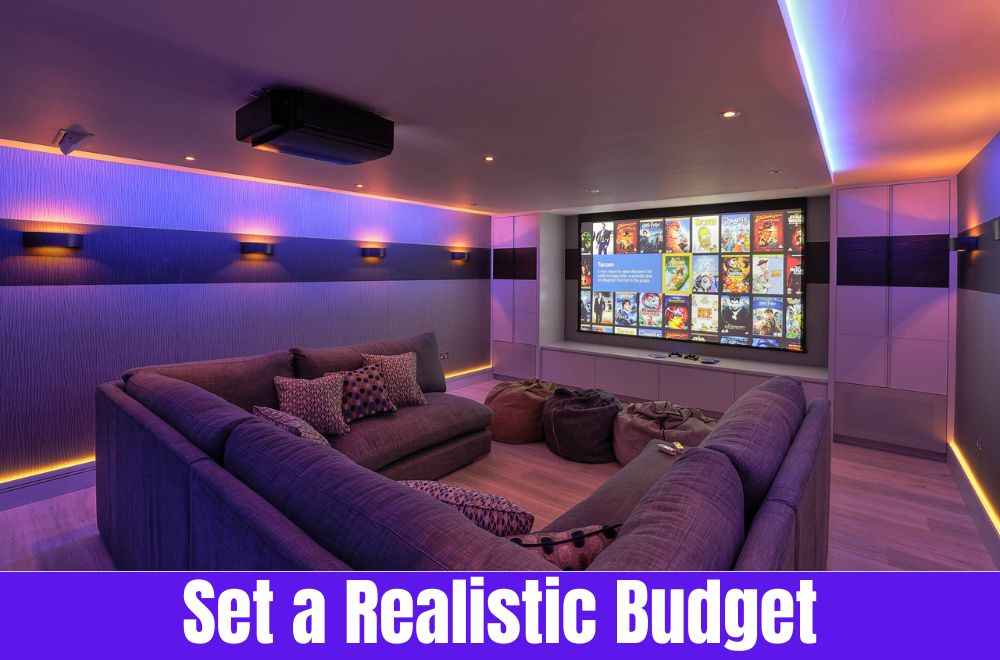
Setting a budget is a foundational step in the journey of designing your home theatre. Start by thoroughly assessing your financial capability and determining the overall investment amount that suits you.
Consider all project aspects, such as top-notch audio-visual equipment expenses, pleasant seating arrangements, aesthetically pleasing decorations, and any essential room restorations.
To make the most of your budget, it is essential to acknowledge and work within financial limitations while allocating funds strategically based on priorities. By giving importance to elements that hold more significance- be it top-of-the-line projectors superior sound systems or luxurious seating arrangements – you can ensure wise utilization of resources at hand.
This deliberate approach not only prevents exceeding spending limits but also enables focused attention on key components for enhancing overall functionality and appeal in building an ideal home theater experience.
3. Choose the Right Equipment
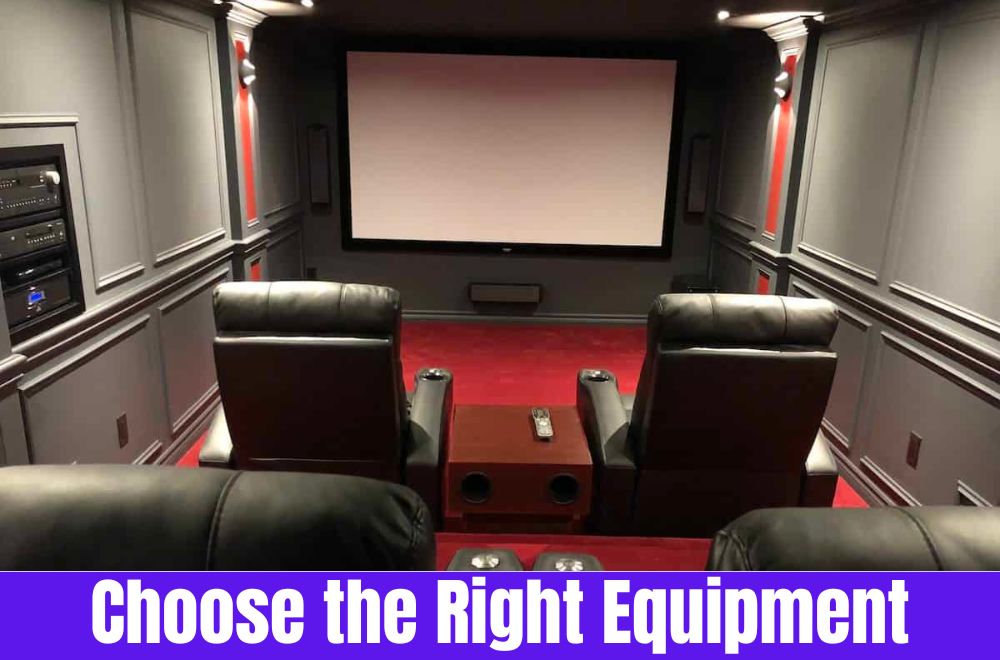
The focal point of a home theatre remains its equipment, encompassing both visual and acoustic components. It’s wise to invest in an exceptional screen or projector that complements your room size.
Moreover, opt for surround sound systems that provide an immersive audio experience with clarity-rich tones. Consider factors like speaker placement and wiring to achieve optimal sound quality.
4. Improve the Lighting
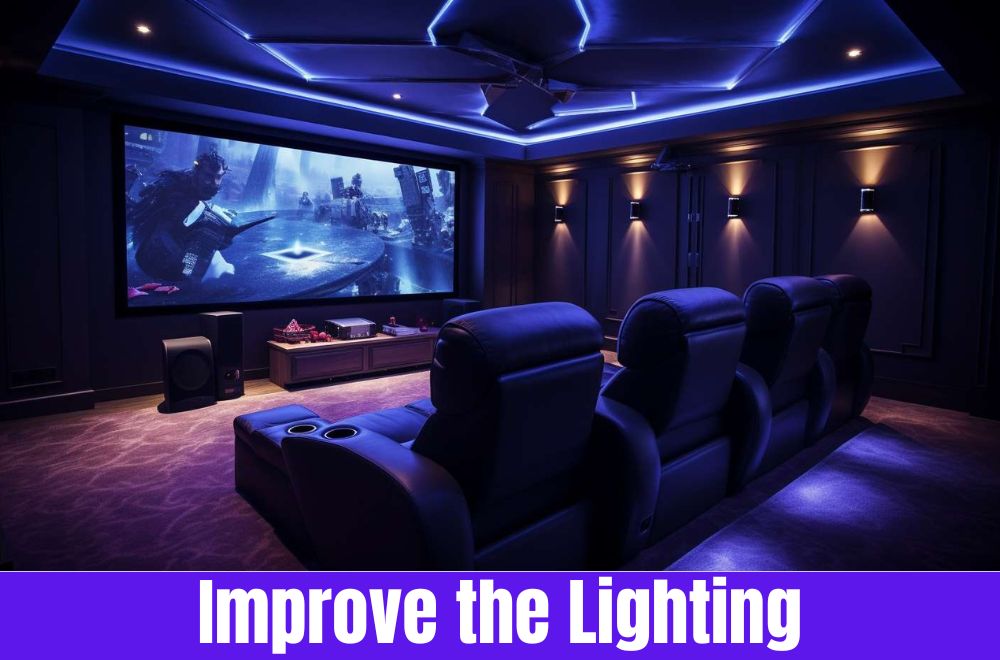
When designing a home theatre, it is important to have control over lighting in order to establish the ideal ambiance. To avoid any distractions during movie nights, one can select blackout curtains or blinds that guarantee an absence of natural light.
For subtle and adjustable lighting that doesn’t detract from on-screen action, dimmable sconces or LED strips could be installed.
5. Integrate Smart Technology
Enhance your home theatre experience through the integration of Smart Technology, bringing convenience and modernity to your entertainment space. It’s highly recommended that you explore investing in a universally compatible remote or an all-inclusive smart home system – for streamlined management of lighting, and audio-visual control with ease and accuracy.
By consolidating control into a single, user-friendly interface, these innovations amplify convenience while concurrently adding contemporary sophistication to your entertainment area. You could envision dimming the lights, adjusting the volume, or selecting your preferred movie with just one tap of a button.
6. Hidden Wires and Cable Management

To maintain a clean and polished look, invest time in cable management. Hide the wires and cables using cable organizers or in-wall conduits.
Conclusion
To sum up, having the skill of how to design a home theatre room can be highly beneficial and elevate your entertainment experience at home. With thorough planning of the arrangement, finances, gadgets, and ambiance; you have the ability to craft an area that not only caters to your functional needs but also offers serenity for leisure pursuits.
As such, take hold of some snacks while lowering down brightness levels as it’s time for a sublime escapade with films or games in your flawlessly designed movie hall!

